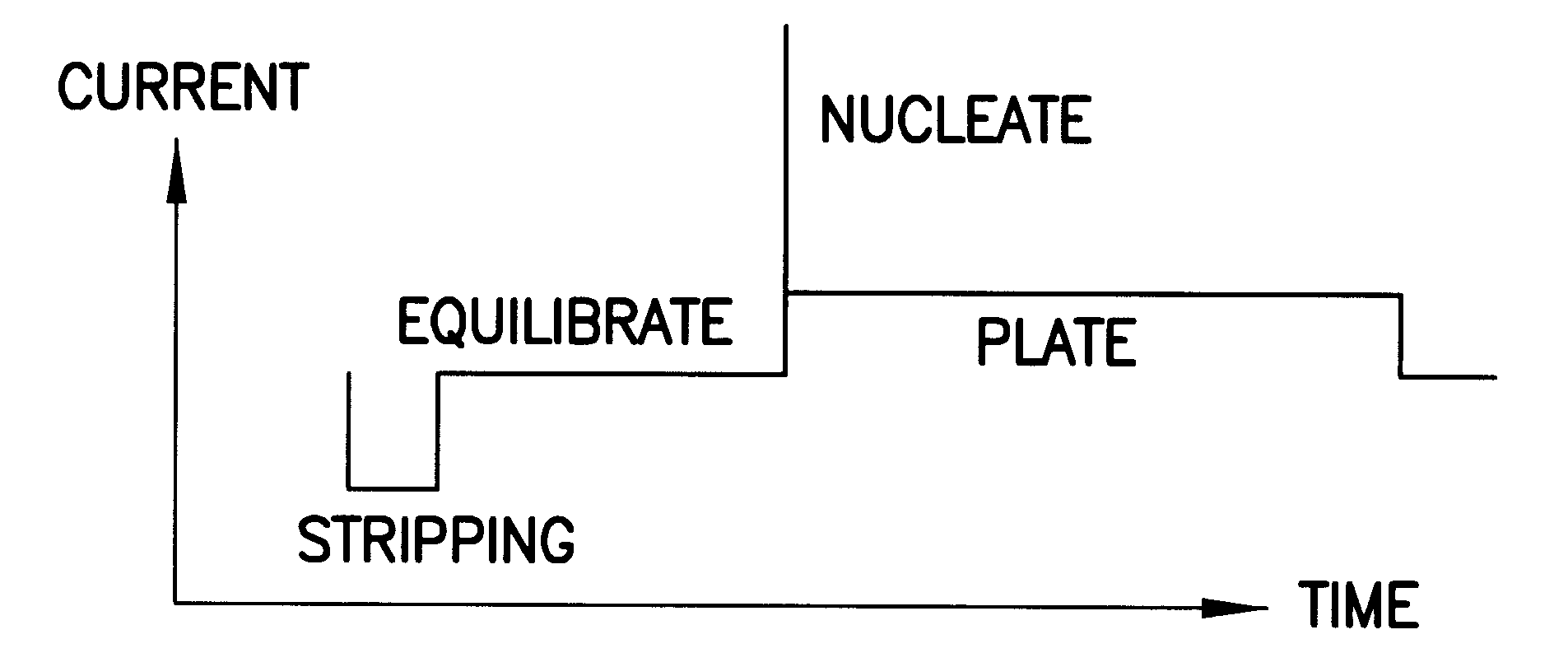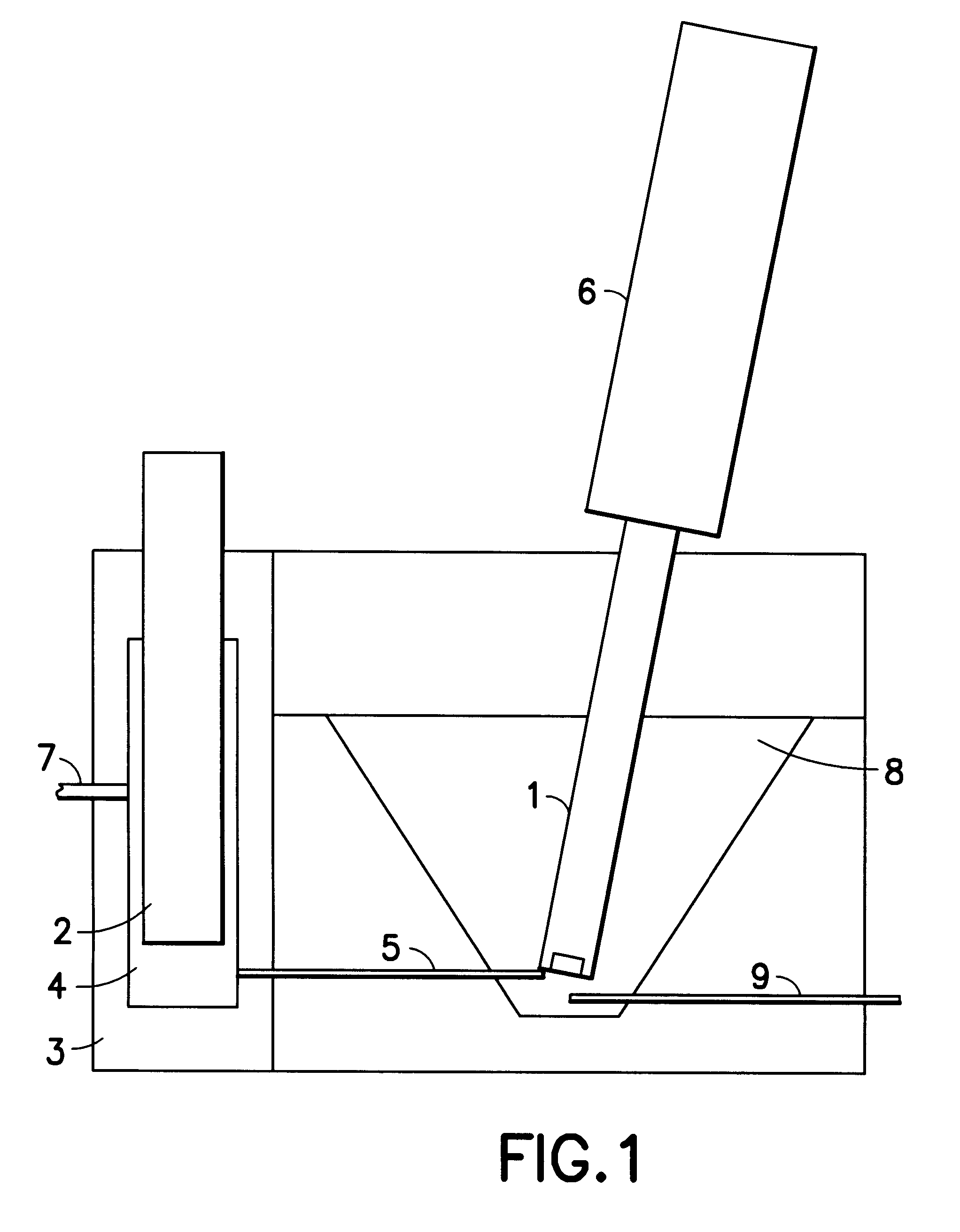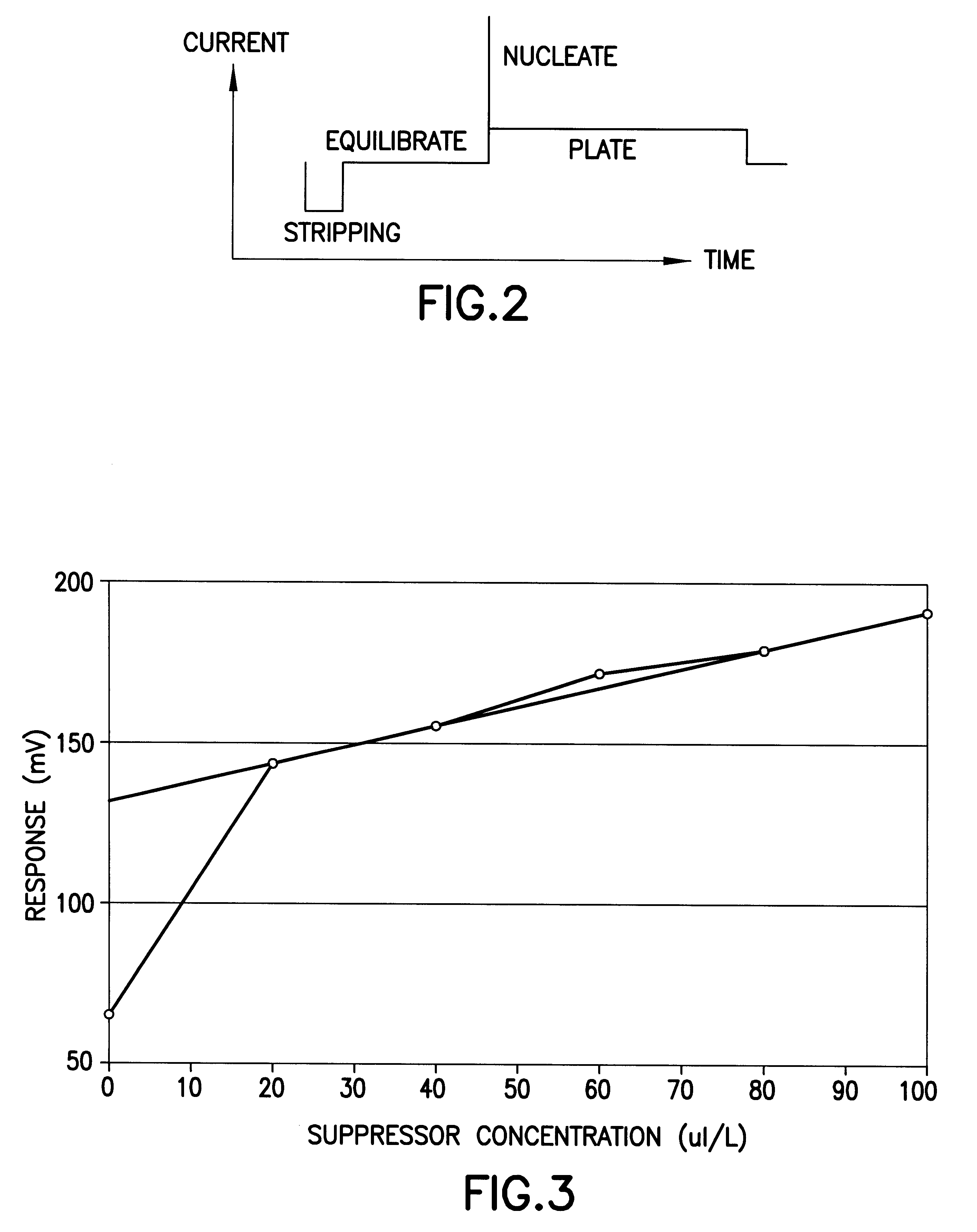Method and apparatus for determination of additives in metal plating baths
a technology of additives and metal plating, applied in the direction of liquid/fluent solid measurements, material electrochemical variables, instruments, etc., can solve the problems of microelectronics exceeding the capabilities of al metal, inability to conventional cvd, performance demands, etc., to achieve efficient characterization of the electroplating medium, simple operation, and economic effect of capital cost and operating expens
- Summary
- Abstract
- Description
- Claims
- Application Information
AI Technical Summary
Benefits of technology
Problems solved by technology
Method used
Image
Examples
example
In addition to the measuring vessel described above, the analyzer consists of 4 digital burettes that are filled with the following solutions:
Burette 1: the sample itself collected from an overflow sample capture vessel
Burette 2: diluted (25.times.) accelerator additive
Burette 3: diluted (25.times.) suppressor
Burette 4: the base solution composed of
70 g / l cupric sulfate pentahydrate
180 g / l 95-97% sulfuric acid
60 ppm chloride as hydrochloric acid
The analyzer was programmed to perform the following sequence. The overall operation given in terms of the actual command code used on the analyzer was as follows:
This sequence of commands has the following significance: 1 C3 a pre-analysis step to prime the dispensing tip of burette 3 by dispensing 0.1 ml
2 S20 a sampling operation in which burette 1 is filled with fresh sample and the dispensing tube (using flow segregation) with 1 ml of a 20.times.diluted sample
3 C3 the background level for the suppressor determination is raised by adding 0...
PUM
| Property | Measurement | Unit |
|---|---|---|
| volume | aaaaa | aaaaa |
| volume | aaaaa | aaaaa |
| volume | aaaaa | aaaaa |
Abstract
Description
Claims
Application Information
 Login to View More
Login to View More - R&D
- Intellectual Property
- Life Sciences
- Materials
- Tech Scout
- Unparalleled Data Quality
- Higher Quality Content
- 60% Fewer Hallucinations
Browse by: Latest US Patents, China's latest patents, Technical Efficacy Thesaurus, Application Domain, Technology Topic, Popular Technical Reports.
© 2025 PatSnap. All rights reserved.Legal|Privacy policy|Modern Slavery Act Transparency Statement|Sitemap|About US| Contact US: help@patsnap.com



